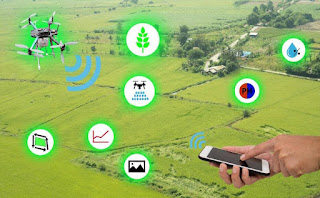Recently, we wrote about the consequences of an outdated inventory management system. If you can relate to inventory management issues such as human error, slow processing times and a lack of automation, RFID is the solution you’ve been waiting for.
Effective inventory management means efficient control of items in the inventory to avoid either under-stocking or over-stocking. Item tracking is also important to ensure that no theft or diversion happens. The standard method of inventory management is using printed bar codes and with handheld or fixed scanners to control and track inventory and equipment. RFID provides a much more efficient and comprehensive solution.
RFID vs barcodes
RFID technology performs better and is more efficient in inventory management than printed bar codes. RFID tags can be read at a distance of up to several meters, while, bar codes need line of sight to scan items. Unlike bar codes which can be easily damaged, RFID tags are also durable since they can withstand exposure to heat, moisture, dirt and contaminants.
With RFID technology, it is possible to read tags simultaneously, thus allowing the entire load of a pallet to be checked at one time. When using bar codes, checking each load is accomplished by checking items one at a time. Each RFID tag can also have a unique identification code making individual product tracking possible. There are also types of RFID tags with codes that can be overwritten remotely, an advantage when there is a need to update the item information. With bar codes, once the code is imprinted with data, it cannot be changed.
Prevent inventory blind spots
Implementing RFID technology in inventory management makes way for better inventory control. Since RFID does not need direct line of sight to check items, it can track items anywhere in the warehouse, thus preventing blind spots in your inventory. With RFID readers installed to cover shelves and other storage, inventory records are also automatically updated since the items removed are instantly recorded. The inventory manager can keep track of the flow of items in the warehouse with software such as Stratum Global’s TagNet.
Avoid over-stocking and under-stocking
With RFID, every item in the warehouse is efficiently monitored allowing for real-time inventory of items in stock in relation to warehouse space. This can help you avoid under-stocking or over-stocking and help you save on shipping and inventory costs.
Ensure stock security
RFID’s ability in real-time and accurate monitoring of items protects inventory from theft. RFID makes it easy for management to spot if an item have been stolen from warehouse racks or shelves. RFID readers can easily detect whether an item is removed or taken without authorization.
Ready to try RFID?
Inventory management requires effective and efficient tracking of items. This prevents a list of common issues in inventory such as over-stocking, under-stocking, and even theft.(from abetech)
More info at http://www.asiarfid.com/blog/how-to-provide-better-help-for-inventory-management-with-rfid.html









